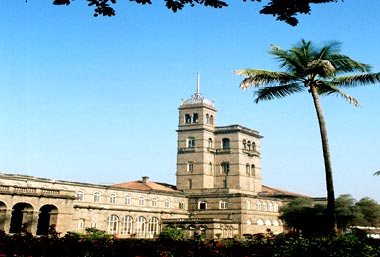
A curious mix of the old, the new and the new-age, prosperous and cosmopolitan Pune epitomizes the face of modern India, with its 21st-century industry (IT), trappings of modern consumer culture, swanky living areas and malls, but with a business vibe that’s some way off from the go-getting frenzy of Mumbai. The city’s cool environs also attract students and retirees, giving it a nice mix of the young and the old.
Pune, of course, is also home to the world-famous new-age guru, the late Shri Bhagwan Rajneesh, better known as Osho, whose pastiche of philosophies – combining the materialistic, the hedonistic and the earthy – enticed devotees in their many thousands. Nowadays, the famous ashram seems to have reached middle-aged respectability, leaving its days of infamy far behind. But Osho’s followers from all over the world – especially those out west seeking life’s answers – continue to flock to the centre.
For trekkers, Pune offers access to some superb hiking trails in the Sahyadri Hills. The Sahyadris are dotted with a profusion of ancient forts, caves and temples, which make hikes in this region very interesting. Day-long treks are usually based out of Pune (but also Mumbai and Lonavala), and are very popular in the Sahyadris. For the history buff, it is possible to link forts, caves and temples in treks lasting between five to seven days.
History
Towards the middle of the 17th century, Pune became the capital of the Maratha kingdom (Shivaji was raised in the city) until the Marathas were overthrown by the Brahmin Peshwas in the early part of the 18th century. The Peshwas were themselves deposed by the British, who took Pune in 1817, made the city into the monsoon capital of the erstwhile Bombay Presidency and set up a military cantonment. The cool climate here also tempted many a maharajah to build their palace in Pune.
Geography
Pune lies on the edge of the Deccan Plateau, a stone’s throw away from the Western Ghats (called the Sahyadri Hills here). The city is situated at the confluence of the River Mula, which forms Pune’s northern border, and the River Mutha, which forms the western boundary. The rivers join as the Mutha-Mula in the northwest of Pune.
Weather
Due to its altitude, Pune avoids the worst of the heat though summer highs can reach 38C (nights are cool). Winters are pleasant, with an average daytime temperature of 28C, and nighttime lows of around 10C (which can drop to as low as 6C in December and January). The monsoon lasts from June to October, though rainfall is never as torrential as seen in many parts of India during this time of year.
How to reach
Pune’s Lohegaon airport is well connected to all metros and major cities in India, as is the main railway station, which is bang in middle of the city. The Deccan Queen, Sinhagad Express and Pragati Express to Mumbai take 3-4hrs.
Cab services to and from Mumbai run round the clock.
Getting Around
Pune has three bus stands – the City Bus Stand (next door to the railway station) serves the city and destinations to the south and west of Pune (Belgaum, Goa, Kolhapur, Lonavala and Mahabaleshwar), while buses leaving Swargate head to destinations in Karnataka. The bus stand neighbouring Shivaji Nagar railway station serves towns to the north of the city (Ahmedabad, Aurangabad, Nasik). Deluxe buses running to Mumbai (via Lonavala) also leave from City.







 Share Via
Share Via











